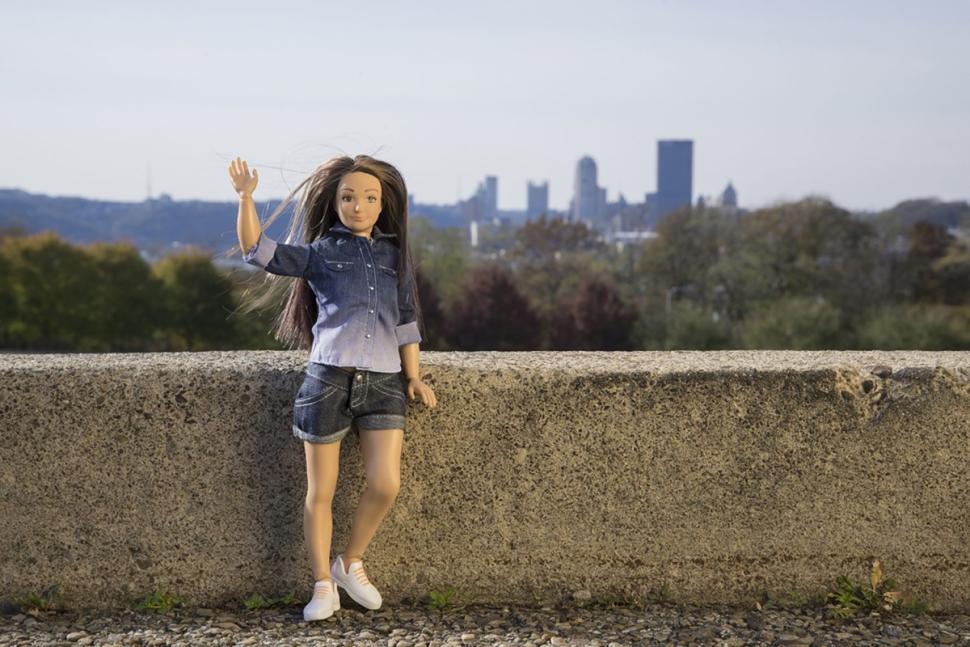By Bonnie Miller Rubin
Chicago Tribune.
When Barbie was launched in 1959, there was little debate over whether her cartoonish bust would obstruct a textbook or her permanently arched feet would make climbing the corporate ladder impossible.
Even my mother — who considered herself an early feminist and would routinely remind her daughters during the Miss America Pageant that the real winners weren’t on the runway but at the library using their brains — bought me my first Barbie doll, a plastic princess with a silky blond ponytail and a zebra-striped swimsuit.
But times have changed, and with that comes a debate over how highly sexualized portrayals of women in toys and media affect girls. Enter what pop culture has dubbed “Normal Barbie,” which has arrived just in time for the holiday season.
The doll — whose real name is “Lammily” — has the measurements of a typical 19-year-old woman’s body and comes with a sticker package of acne, cellulite, stretch marks and scars.
Lammily is the brainchild of Nickolay Lamm, a 26-year-old graphic designer from Pittsburgh, who crowd-funded his Lammily prototype, raising more than $500,000, despite people telling him that fantasy is what drives brisk business.
“I want to show that reality is beautiful,” Lamm said. “I just think she’s really relatable.”
The Lammily doll became available Wednesday for $25 at lammily.com, with the sticker pack an additional $6. Traffic crashed the website for seven hours that day, Lamm said. Even so, he expected to hit $200,000 in sales by day’s end Thursday.
Many observers applauded the tag line, “Average is beautiful,” which embraces the larger message that women should be celebrated for their accomplishments, not willowy waists. Lamm based his proportions on Centers for Disease Control and Prevention data, which put the weight of the typical American woman at 166.2 pounds. He also toned down the makeup and jettisoned Barbie’s stilettos for sensible flats.
Yet one local mom said the new doll would be a tough sell for her Barbie-loving 6-year-old.
“My daughter probably wouldn’t give this doll a second glance as it is now,” Jill McSheridan, of Harwood Heights, said in an email. “Give this doll more hair color options and better clothes, then it’d be great.”
While some see the invention as an antidote to the sparkly, frilly Pepto-Bismol pink toy aisle and a way to inspire girls to enter the science, technology, engineering and math — or STEM — fields, Carol Post, the lone female principal at Chicago structural engineering firm Thornton Tomasetti, said such efforts are misguided.
“I had a Barbie doll … and I never at any point thought I’d look like her, but I did make her clothes,” Post said. “Where’s the creativity here? Even the Suzy Homemaker oven was a form of chemistry … you learned what would happen if you put in too much baking soda or not enough.”
While she acknowledged that there needs to be more of a push to attract women to STEM careers, it will come through mentoring and collaboration between working professionals and young girls.
“Barbie — good, bad or mediocre — is not going to solve that,” she said.














































































































































































































































































































































































